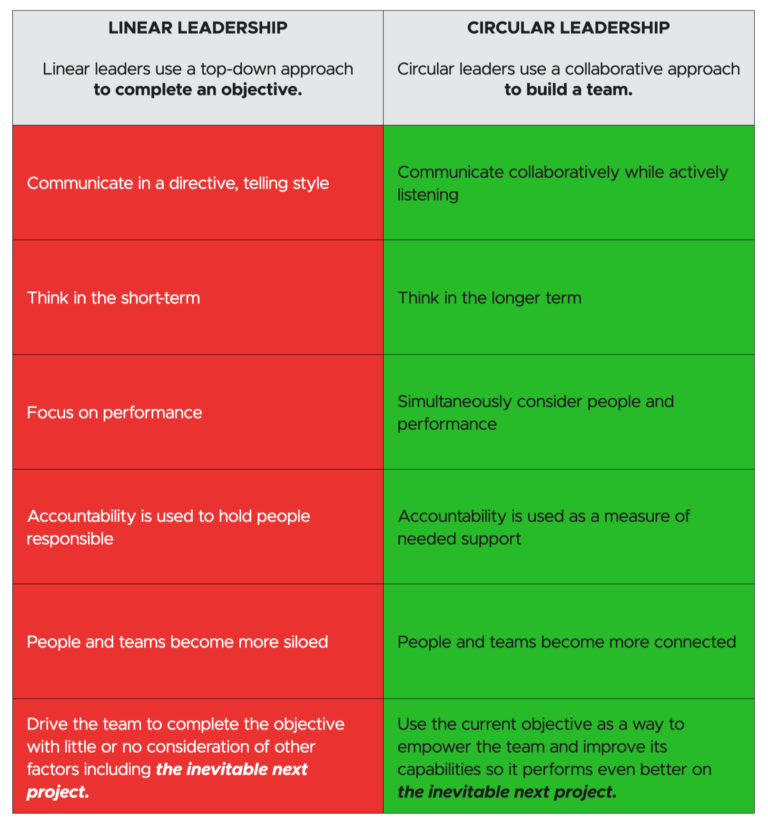Alex Glassey coined the terms linear leadership and circular leadership to denote the two distinct types of business leadership.
Linear leadership is seen in virtually every industry in organisations of every size. It is based on hierarchy and power. A leader is assumed to have the necessary information to make decisions. Their decisions are expected to be unquestioned. Their instructions are treated as orders to be carried out. This one-way communication can be pictured as a single arrow, hence the term ‘linear’ leadership.
Circular leaders have just as much power and authority than linear leaders. However, they value the perspectives and input of their subordinates. They provide their staff with support that recognises their human and social needs. They appreciate the importance of learning as part of each job function. Their collaborative interactions—like talking around a campfire—inspire the name ‘circular’ leadership.
The chart below summarises the distinct characteristics of traditional top-down leadership (linear leadership) versus collaborative leadership (circular leadership).

Fundamental differences between linear leadership and circular leadership
To a linear leader, success means completing an objective as specified. There is little room for discussion or deviation. Once the objective is assigned, it becomes the responsibility of subordinates to complete it as specified. Additional time, effort or resources are often expected to be provided by subordinates. Anything not specifically related to the current objective falls outside the purview of the leader and their team.
Such a leadership approach is more likely to create unquestioning, siloed teams that are only held accountable to outcomes.
While respecting the importance of completing objectives, circular leaders define success more broadly. They recognise the wisdom that comes from multiple perspectives. They understand that modern projects are complex, dynamic and interrelated. They appreciate the importance of flexibility, trust and communication to everyone involved. They understand the power that implicitly comes with leadership and they use it to support their team.
Circular leaders are more likely to build collaborative, empowered, resilient teams that are more likely to deliver additional value.
Circular leaders invest their time and resources to grow the value of their team
Circular leaders see their job as an investor might. They invest their time and patience. They share their knowledge and experience. In this way, their people and the team grows in their understanding, capability and independence. By growing their team’s abilities, new organisational capabilities are created.
This investment approach to leadership, therefore, treats each new project as an opportunity to grow the value of the oganisation’s workforce.
